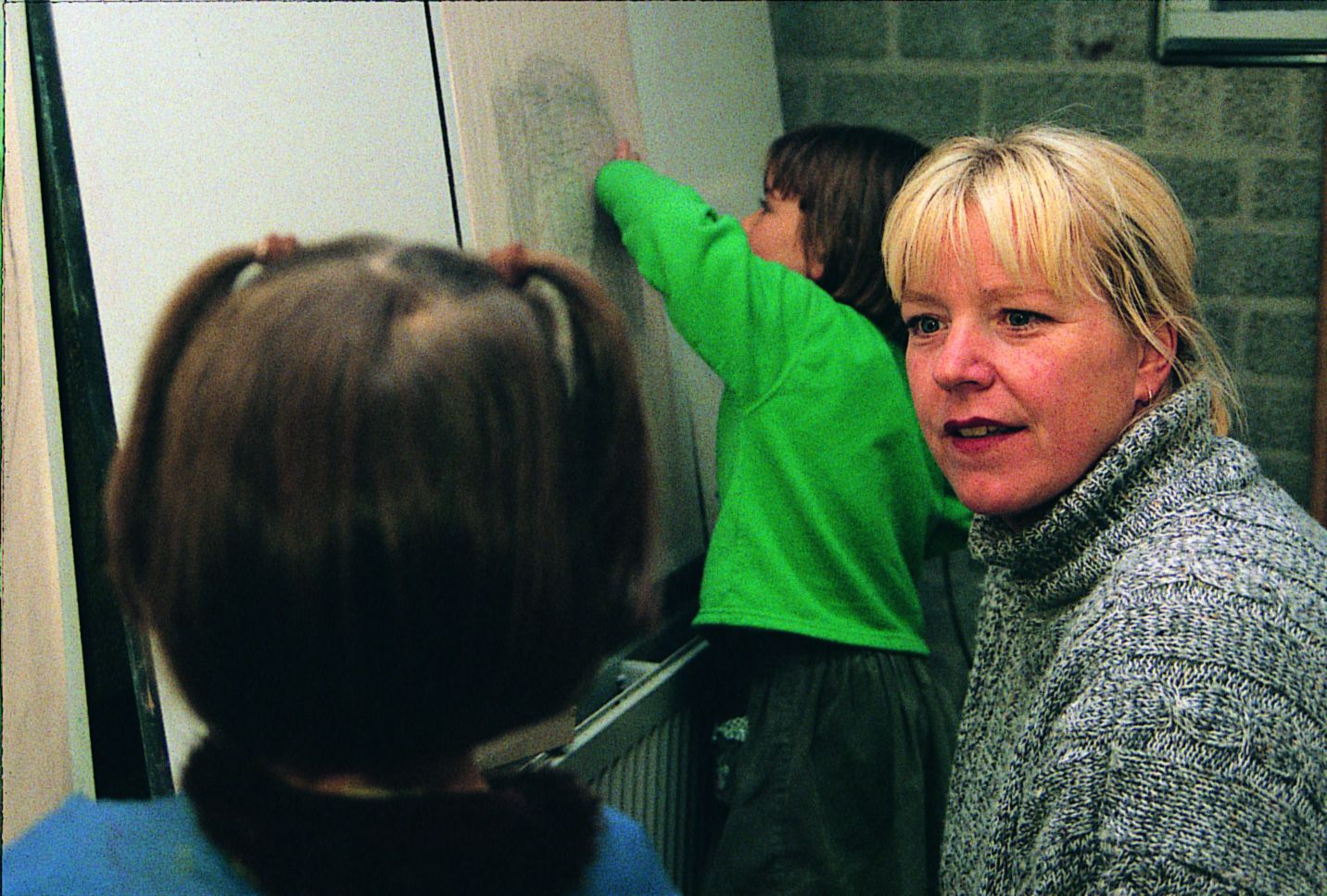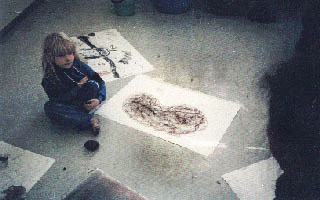The mediator as Group Teacher or Remedial Teacher

‘Aesthetics are the wheel clamp on your expression – a statement by Michiel Dhont
Guidance with open ended questions
Group teachers and other teaching staff such as remedial teachers play a key role in guiding learning processes. They are the translators of the cultural heritage and as mediators (a term by R. Feuerstein) can guide the child in forging a link between its inner and outer world. The group teacher/mediator may or may not see the signs and significance based on the images created by the child. In either case it is paramount that the group teacher/mediator as much as possible invites the child to talk about the drawing it has made.
The best way to do this is by asking the child open ended questions. This will start up a dialogue between the child and the drawing or clay image it has made. Open ended questions are questions in which the group teacher does not include any of his or her own interpretation or judgement, so the child can give its own answer based on the drawing.
The dialogue is a living reflection of the work that has been created out of the relationship between the child’s inner and outer world.
The aim is for the child to become aware of the relationship between both the inner images and their source as well as the stimuli from the outside world: the cultural reality and/or nature (Paolo Freire/Cultural action for freedom).

The trialogue comes into being via open questions posed to the child by the group teacher/mediator and the significance or interpretations the child gives through its dialogue with the drawing it has made.
The aim of the open ended questions is for the child to become aware of its personal learning path and development possibilities through open questions. These systems of meaning are part of the cultural heritage.
An important characteristic of the dialogue is the perspective from which the questions are posed to the child. The dialogue may also evoke and make debatable existential questions the child has which until then have not been discussed or answered. These questions may not always be answerable. It is even debatable whether all questions should be answered. Often just expressing them is useful and sufficient.
Each group teacher explores his or her own possibilities in drawing their own boundaries in their role of coach. You may not identify with or feel comfortable in the role of coaching the child in the dialogue. The practical execution of the exercises already gives the children so much that this in itself will more than suffice.
The child knows all its own inner images. That is why it is important that the group teacher gives the child a lot of space through the open ended questions and does not express his or her own interpretations and judgements. Only if the group teacher knows something specific about the child, he/she may carefully make ‘open ended’ suggestions to let the child itself find and express an emotion or insight in an answer.
Obviously this may be a very sensitive issue as regards trust, especially in a class setting. You may see it as a typical pedagogic or therapeutic moment. Approach the child as little as possible in the sense of “well done” or “how beautiful. This does not correspond with its feelings regarding the drawing or the clay object. (Johannes Itten-Bauhaus: ‘geen esthetische logica (no aesthetic logic) ‘/ Alice Miller: ‘een kindertijd in beeld’ (a childhood in images).
‘Aesthetics are the wheel clamp on your expression‘ is Michiel Dhont’s motto in which he expresses this clearly.
A child does not have this aesthetic judgement. Children pick it up from adults. Children then become inclined to make something that adults will find ‘beautiful’. They start trying to fulfil something, thereby eventually losing their intuition’s innocence and their individuality in the expression of an inner image.
The experiences with this method show that children become more aware of their own place in relation to the outside world. The result is acting in a more purposeful and conscious manner and an increase in the child’s ability to concentrate.
Experience based learning
These teaching learning processes can be transferred via the visual to cognitive subjects.
Essentially they are concerned with the same elements: increasing knowledge of the world and matter, gaining own experiences out of the own self, applying knowledge and experiences in new situations and integrating these into the personal system of emotions, knowledge and acting; a never ending cycle of learning.
